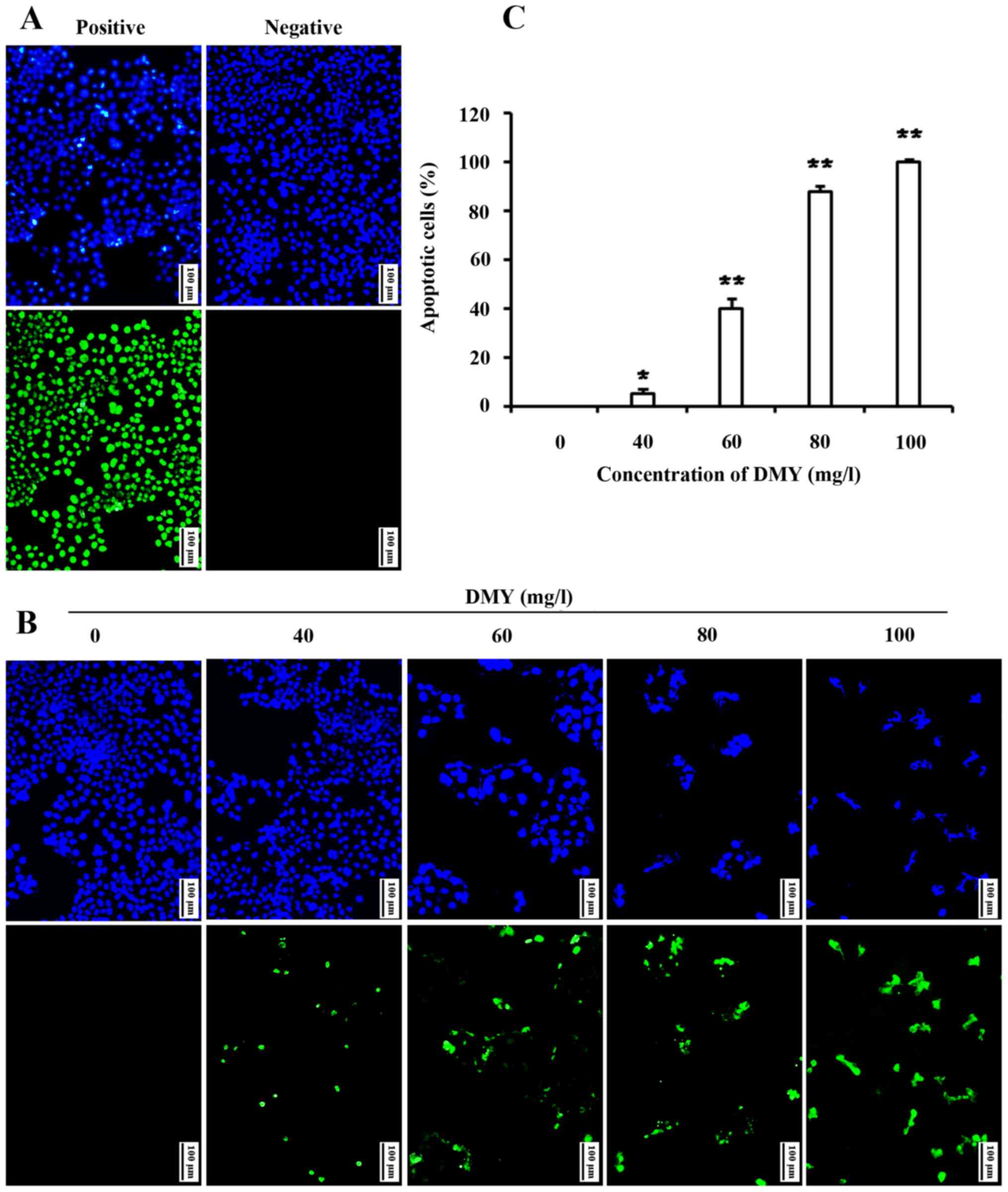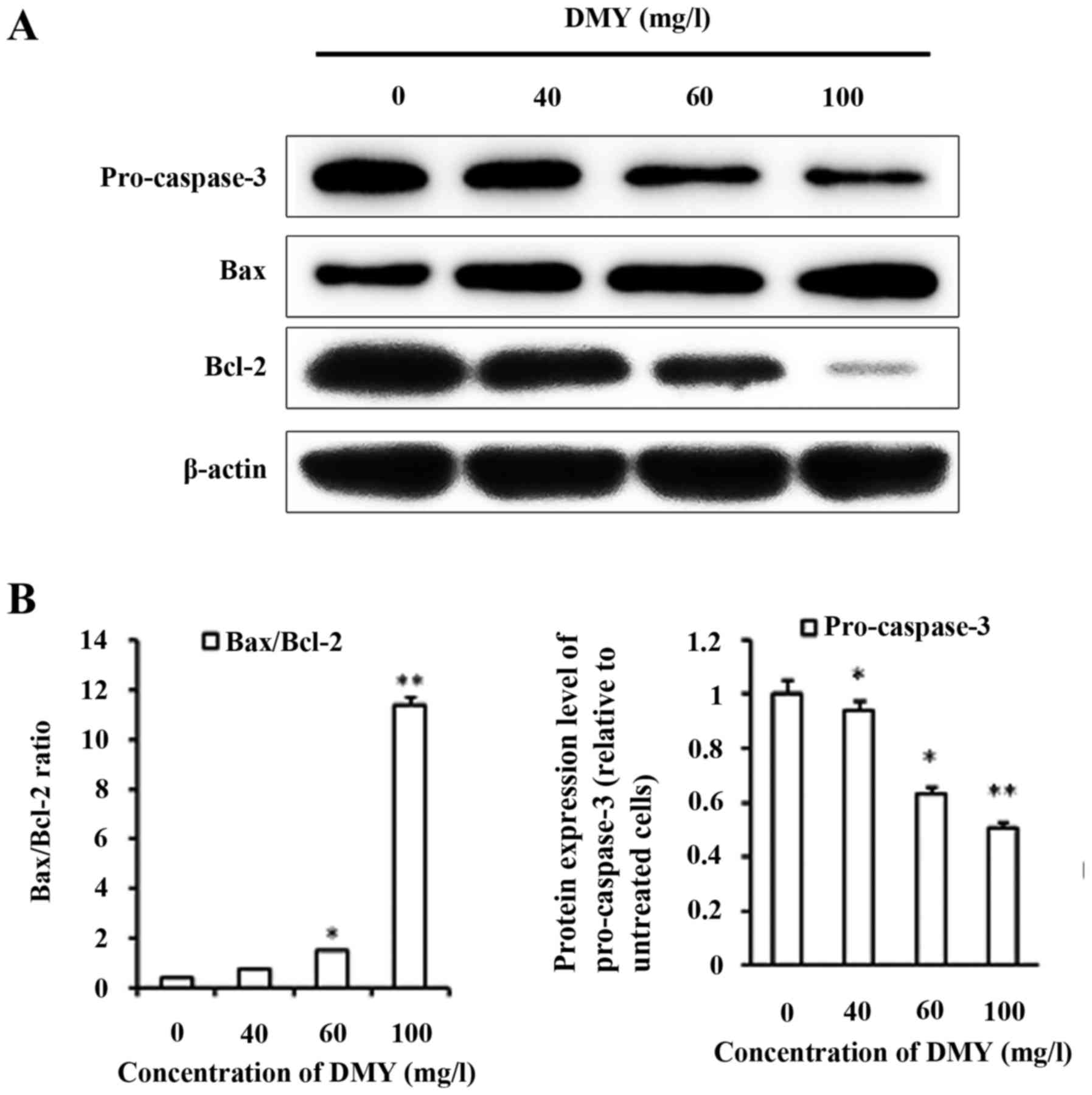|
1
|
Xu Q, Tan Y, Zhang K and Li Y: Crosstalk
between p38 and Smad3 through TGF-β1 in JEG-3 choriocarcinoma
cells. Int J Oncol. 43:1187–1193. 2013. View Article : Google Scholar : PubMed/NCBI
|
|
2
|
Tan Y, Xu Q, Li Y, Mao X and Zhang K:
Crosstalk between the p38 and TGF-β signaling pathways through
TβRI, TβRII and Smad3 expression in plancental choriocarcinoma
JEG-3 cells. Oncol Lett. 8:1307–1311. 2014. View Article : Google Scholar : PubMed/NCBI
|
|
3
|
Yamamoto E, Ino K, Yamamoto T, Sumigama S,
Nawa A, Nomura S and Kikkawa F: A pure nongestational
choriocarcinoma of the ovary diagnosed with short tandem repeat
analysis: Case report and review of the literature. Int J Gynecol
Cancer. 17:254–258. 2007. View Article : Google Scholar : PubMed/NCBI
|
|
4
|
Kobayashi Y, Shimizu T, Naoe H, Ueki A,
Ishizawa J, Chiyoda T, Onishi N, Sugihara E, Nagano O, Banno K, et
al: Establishment of a choriocarcinoma model from immortalized
normal extravillous trophoblast cells transduced with HRASV12. Am J
Pathol. 179:1471–1482. 2011. View Article : Google Scholar : PubMed/NCBI
|
|
5
|
Wu S, Liu B, Zhang Q, Liu J, Zhou W, Wang
C, Li M, Bao S and Zhu R: Dihydromyricetin reduced Bcl-2 expression
via p53 in human hepatoma HepG2 cells. PLoS One. 8:e768862013.
View Article : Google Scholar : PubMed/NCBI
|
|
6
|
Ye J, Guan Y, Zeng S and Liu D: Ampelopsin
prevents apoptosis induced by H2O2 in MT-4 lymphocytes. Planta Med.
74:252–257. 2008. View Article : Google Scholar : PubMed/NCBI
|
|
7
|
Wu Y, Bai J, Zhong K, Huang Y and Gao H: A
dual antibacterial mechanism involved in membrane disruption and
DNA binding of 2R,3R-dihydromyricetin from pine needles of Cedrus
deodara against Staphylococcus aureus. Food Chem. 218:463–470.
2017. View Article : Google Scholar : PubMed/NCBI
|
|
8
|
Xu B, Huang S, Wang C, Zhang H, Fang S and
Zhang Y: Anti-inflammatory effects of dihydromyricetin in a mouse
model of asthma. Mol Med Rep. 15:3674–3680. 2017. View Article : Google Scholar : PubMed/NCBI
|
|
9
|
Liu B, Zhou W, Chen X, Xu F, Chen Y, Liu
J, Zhang Q, Bao S, Chen N, Li M and Zhu R: Dihydromyricetin induces
mouse hepatoma Hepal-6 cell apoptosis via the transforming growth
factor-β pathway. Mol Med Rep. 11:1609–1614. 2015. View Article : Google Scholar : PubMed/NCBI
|
|
10
|
Wang JT, Jiao P, Zhou Y and Liu Q:
Protective effect of dihydromyricetin against
lipopolysaccharide-induced acute kidney injury in a rat model. Med
Sci Monit. 22:454–459. 2016. View Article : Google Scholar : PubMed/NCBI
|
|
11
|
Fan TF, Wu TF, Bu LL, Ma SR, Li YC, Mao L,
Sun ZJ and Zhang WF: Dihydromyricetin promotes autophagy and
apoptosis through ROS-STAT3 signaling in head and neck squamous
cell carcinoma. Oncotarget. 7:59691–59703. 2016. View Article : Google Scholar : PubMed/NCBI
|
|
12
|
Zhang Z, Zhang H, Chen S, Xu Y, Yao A,
Liao Q, Han L, Zou Z and Zhang X: Dihydromyricetin induces
mitochondria-mediated apoptosis in HepG2 cells through
down-regulation of the Akt/Bad pathway. Nutr Res. 38:27–33. 2017.
View Article : Google Scholar : PubMed/NCBI
|
|
13
|
Ji FJ, Tian XF, Liu XW, Fu LB, Wu YY, Fang
XD and Jin HY: Dihydromyricetin induces cell apoptosis via a
p53-related pathway in AGS human gastric cancer cells. Genet Mol
Res. 14:15564–15571. 2015. View Article : Google Scholar : PubMed/NCBI
|
|
14
|
Kao SJ, Lee WJ, Chang JH, Chow JM, Chung
CL, Hung WY and Chien MH: Suppression of reactive oxygen
species-mediated ERK and JNK activation sensitizes
dihydromyricetin-induced mitochondrial apoptosis in human non-small
cell lung cancer. Environ Toxicol. 32:1426–1438. 2017. View Article : Google Scholar : PubMed/NCBI
|
|
15
|
Zeng S, Liu D, Ye Y, Wang L and Wang W:
Anti-tumor effects of ampelopsin on human lung cancer GLC-82
implanted in nude mice. Zhong Yao Cai. 27:842–845. 2004.(In
Chinese). PubMed/NCBI
|
|
16
|
Luo GQ, Zeng S and Liu DY: Inhibitory
effects of ampelopsin on angiogenesis. Zhong Yao Cai. 29:146–150.
2006.(In Chinese). PubMed/NCBI
|
|
17
|
Zhou FZ and Zhang XF: Suppression of
distant pulmonary metastasis of 4T1 mice breast carcinoma by
dihydromyricetin administration. Chin J Clinicians(Electronic Ed).
8:1674–1678. 2014.(In Chinese).
|
|
18
|
Jiang L, Zhang Q, Ren H, Ma S, Lu C, Liu
B, Liu J, Liang J, Li M and Zhu R: Dihydromyricetin enhances the
chemo-sensitivity of nedaplatin via regulation of the p53/Bcl-2
pathway in hepatocellular carcinoma cells. PLoS One.
10:e01249942015. View Article : Google Scholar : PubMed/NCBI
|
|
19
|
Wong IL, Wang BC, Yuan J, Duan LX, Liu Z,
Liu T, Li XM, Hu X, Zhang XY, Jiang T, et al: Potent and nontoxic
chemosensitizer of P-Glycoprotein-mediated multidrug resistance in
cancer: Synthesis and evaluation of methylated epigallocatechin,
gallocatechin, and dihydromyricetin derivatives. J Med Chem.
58:4529–4549. 2015. View Article : Google Scholar : PubMed/NCBI
|
|
20
|
Su DL, Huang JH and Yao MJ: The acute
toxicological evaluation of dihydromyricetin and its control effect
for alcoholic hepatic injury. Hun Agricultural Sci. 90–93. 2009.(In
Chinese).
|
|
21
|
Biaglow JE and Miller RA: The thioredoxin
reductase/thioredoxin system: Novel redox targets for cancer
therapy. Cancer Biol Ther. 4:6–13. 2005. View Article : Google Scholar : PubMed/NCBI
|
|
22
|
Kiraz Y, Adan A, Yandim Kartal M and Baran
Y: Major apoptotic mechanisms and genes involved in apoptosis.
Tumour Biol. 37:8471–8486. 2016. View Article : Google Scholar : PubMed/NCBI
|
|
23
|
Czabotar PE, Lessene G, Strasser A and
Adams JM: Control of apoptosis by the BCL-2 protein family:
Implications for physiology and therapy. Nat Rev Mol Cell Biol.
15:49–63. 2014. View
Article : Google Scholar : PubMed/NCBI
|
|
24
|
Ghoneum M, Matsuura M, Braga M and
Gollapudi S: S. cerevisiae induces apoptosis in human metastatic
breast cancer cells by altering intracellular Ca2+ and the ratio of
Bax and Bcl-2. Int J Oncol. 33:533–539. 2008.PubMed/NCBI
|
|
25
|
Kluck RM, Bossy-Wetzel E, Green DR and
Newmeyer DD: The release of cytochrome c from mitochondria: A
primary site for Bcl-2 regulation of apoptosis. Science.
275:1132–1136. 1997. View Article : Google Scholar : PubMed/NCBI
|
|
26
|
Bar-Am O, Weinreb O, Amit T and Youdim MB:
Regulation of Bcl-2 family proteins, neurotrophic factors, and APP
processing in the neurorescue activity of propargylamine. FASEB J.
19:1899–1901. 2005. View Article : Google Scholar : PubMed/NCBI
|
|
27
|
Prenek L, Boldizsár F, Kugyelka R, Ugor E,
Berta G, Németh P and Berki T: The regulation of the mitochondrial
apoptotic pathway by glucocorticoid receptor in collaboration with
Bcl-2 family proteins in developing T cells. Apoptosis. 22:239–253.
2017. View Article : Google Scholar : PubMed/NCBI
|
|
28
|
Porter AG and Jänicke RU: Emerging roles
of caspase-3 in apoptosis. Cell Death Differ. 6:99–104. 1999.
View Article : Google Scholar : PubMed/NCBI
|













